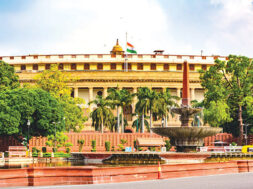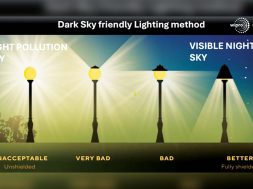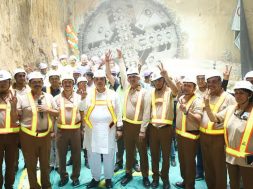
India’s iconic governance centre for the Future: Central Vista
The new Parliament building in India is a groundbreaking architectural achievement that seamlessly blends modern infrastructure and technology with historical significance and cultural heritage. Designed exclusively for India’s parliamentary functions, the new building surpasses its predecessor in functionality and capacity while preserving the essence of Indian democracy. This case study explores the significance of the new Parliament building, its integration of modern infrastructure and technology, its harmonious relationship with the existing Sansad Bhavan building, the historical journey and current state of Central Vista, the proposed master plan, and the innovative features incorporated during the redesign process.
The new Parliament building holds immense significance as India’s first purpose-designed parliamentary structure. With larger halls, it accommodates 768 seats for the Lok Sabha and 396 seats for the Rajya Sabha, and during joint sessions, the Lok Sabha hall can expand to accommodate up to 1,132 seats. This increased capacity reflects the growing population and future delimitation needs of India. Furthermore, the building incorporates essential facilities such as committee rooms and major offices while also featuring publicly accessible museum-grade galleries and exhibits. The Constitution Hall and Gallery, positioned centrally, showcase the Indian Constitution and artefacts representing India’s rich heritage, promoting public engagement with the essence of Indian democracy.
The design of the new Parliament building exemplifies the integration of state-of-the-art infrastructure and technology to enhance parliamentary functions. Smart displays and biometrics are incorporated into the furniture, providing intuitive graphical voting interfaces. The building also features a digital language interpretation and recording infrastructure, enabling real-time metadata production. Programmable microphones further enhance the technological capabilities of the Parliament, ensuring efficient communication and collaboration among members. These technological advancements contribute to the overall efficiency and effectiveness of the governance process.
The new Parliament building harmoniously complements the Sansad Bhavan, paying homage to its architectural inspiration while incorporating elements of India’s classical, folk, and tribal arts and crafts. The architectural ornamentation of the new building showcases the cultural heritage of India, emphasising its connection to the nation. By retaining the National Emblem atop the new Parliament building, the project symbolically links the historical journey of Indian democracy with its modern embodiment, reinforcing the democratic spirit.
Central Vista, originally conceived as the capital of British India, encompasses iconic buildings such as Rashtrapati Bhavan, Parliament House, the North and South Blocks, and India Gate. Post-independence, adding buildings without a cohesive architectural vision led to challenges in maintaining public spaces and landscapes. The ongoing use of temporary military barracks detracted from the area’s grandeur and order. The new Parliament building, along with the proposed master plan, aims to restore the architectural character of Central Vista, consolidate government functions, and create modern, sustainable facilities while preserving the historical significance of the site.
The proposed master plan for Central Vista aims to transform it into an iconic governance centre, a grand public space, and a cherished part of India’s heritage. The plan focuses on providing modern, sustainable, and upgradeable facilities for administration, cultural institutions, and public spaces. It aims to restore the area’s architectural integrity, preserve heritage buildings, expand and improve public spaces, and extend the Central Vista axis, revitalising the area’s formal order, grandeur, and symmetry. By consolidating essential government functions, the plan enhances the efficiency and functionality of the administrative processes.
The new Parliament building is a testament to India’s commitment to modern democracy while honouring its historical journey. By integrating cutting-edge technology, modern infrastructure, and thoughtful design, the building enhances the efficiency of parliamentary functions. The coexistence of the new building with the Sansad Bhavan exemplifies the harmonious fusion of tradition and innovation. The Central Vista master plan further solidifies India’s vision of creating an iconic governance infrastructure while preserving the area’s historical and cultural heritage. Overall, the new Parliament building showcases the strength of India’s infrastructure and its ability to adapt to the changing needs of governance in the modern era.
Cookie Consent
We use cookies to personalize your experience. By continuing to visit this website you agree to our Terms & Conditions, Privacy Policy and Cookie Policy.










